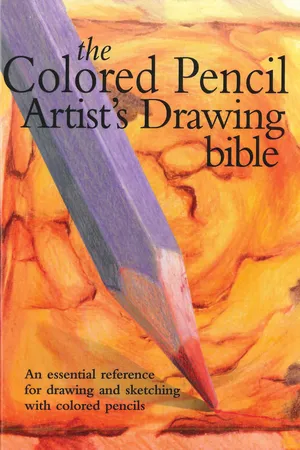
eBook - ePub
Colored Pencil Artist's Drawing Bible
An Essential Reference for Drawing and Sketching with Colored Pencils
- 192 pages
- English
- ePUB (mobile friendly)
- Available on iOS & Android
eBook - ePub
Colored Pencil Artist's Drawing Bible
An Essential Reference for Drawing and Sketching with Colored Pencils
About this book
Step by step instructions guide you through a range of blending, mark-making, and mixed media techniques to improve your drawing skills, and introduce you to a range of new effects. Over 30,000 copies sold worldwide. Includes a comprehensive guide to color and composition, and all the tools, materials, and techniques you need to capture a range of subjects, from still-life studies to holiday sketching and portraiture.
This book also includes a gallery of inspirational works from other artists, and an image bank of copyright-free photography mean you can get started straight away. This hardcover book with internal wire-o binding is 6.5in x 8in, a perfect size for readers to keep handy and reference often. The stylish design of this book, along with the interior photographs, illustrations and diagrams, make the learning process simple and fun for beginners and provides useful tips for more advanced readers.
The Colored Pencil Artist's Drawing Bible describes techniques like hatching, blending, blending with solvents, impressing, sgraffito, burnishing, and more. Other chapters detail how to use complementary colors, and lightening and darkening colors. Directions on composing, and images in a gallery help artists improve their skill.
This book also includes a gallery of inspirational works from other artists, and an image bank of copyright-free photography mean you can get started straight away. This hardcover book with internal wire-o binding is 6.5in x 8in, a perfect size for readers to keep handy and reference often. The stylish design of this book, along with the interior photographs, illustrations and diagrams, make the learning process simple and fun for beginners and provides useful tips for more advanced readers.
The Colored Pencil Artist's Drawing Bible describes techniques like hatching, blending, blending with solvents, impressing, sgraffito, burnishing, and more. Other chapters detail how to use complementary colors, and lightening and darkening colors. Directions on composing, and images in a gallery help artists improve their skill.
Frequently asked questions
Yes, you can cancel anytime from the Subscription tab in your account settings on the Perlego website. Your subscription will stay active until the end of your current billing period. Learn how to cancel your subscription.
At the moment all of our mobile-responsive ePub books are available to download via the app. Most of our PDFs are also available to download and we're working on making the final remaining ones downloadable now. Learn more here.
Perlego offers two plans: Essential and Complete
- Essential is ideal for learners and professionals who enjoy exploring a wide range of subjects. Access the Essential Library with 800,000+ trusted titles and best-sellers across business, personal growth, and the humanities. Includes unlimited reading time and Standard Read Aloud voice.
- Complete: Perfect for advanced learners and researchers needing full, unrestricted access. Unlock 1.4M+ books across hundreds of subjects, including academic and specialized titles. The Complete Plan also includes advanced features like Premium Read Aloud and Research Assistant.
We are an online textbook subscription service, where you can get access to an entire online library for less than the price of a single book per month. With over 1 million books across 1000+ topics, we’ve got you covered! Learn more here.
Look out for the read-aloud symbol on your next book to see if you can listen to it. The read-aloud tool reads text aloud for you, highlighting the text as it is being read. You can pause it, speed it up and slow it down. Learn more here.
Yes! You can use the Perlego app on both iOS or Android devices to read anytime, anywhere — even offline. Perfect for commutes or when you’re on the go.
Please note we cannot support devices running on iOS 13 and Android 7 or earlier. Learn more about using the app.
Please note we cannot support devices running on iOS 13 and Android 7 or earlier. Learn more about using the app.
Yes, you can access Colored Pencil Artist's Drawing Bible by Jane Strother in PDF and/or ePUB format, as well as other popular books in Art & Techniques d'art. We have over one million books available in our catalogue for you to explore.
Information
Topic
ArtSubtopic
Techniques d'artCHAPTER 1

Tools and Materials

Types of colored pencil
The main difference between types of colored pencil is whether or not they are water-soluble. The latter can be used wet or dry, providing a high degree of textural variation. Both these and any of the softer, waxier pencils create subtle shading effects and color gradations.
Line work, hatching, and shading with any degree of intricacy requires a finer pencil, which retains a sharp point for longer, even if the preliminary work is done with a water-soluble one. In fact, some of these pencils perform extremely well on a surface previously worked with water-soluble pencil—wet or dry.
Working with a combination of both types of pencil provides an opportunity for a greater range of marks and layering of color, although the variations may be slight.
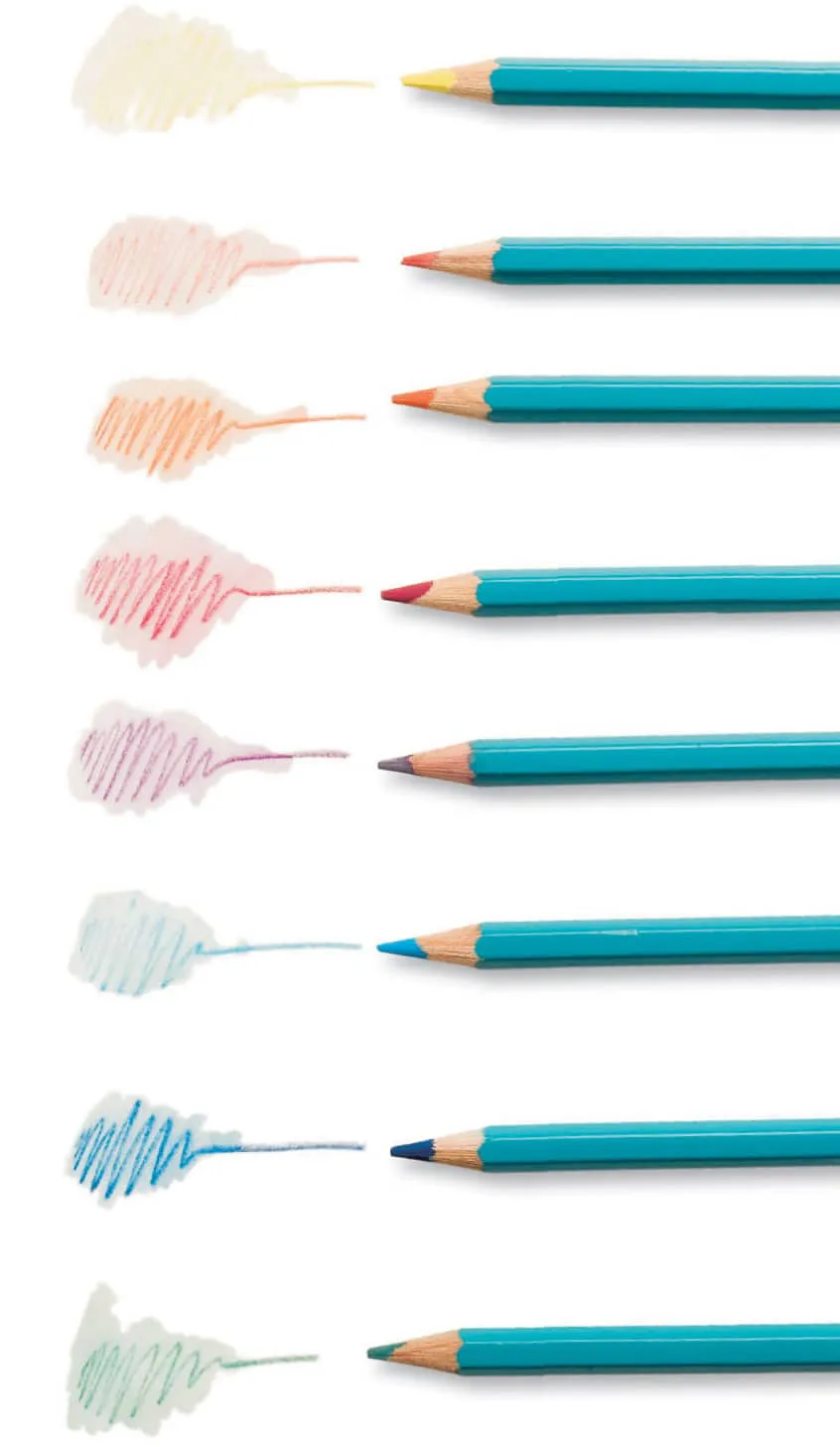
Watercolor effects
Water-soluble pencils, such as those shown on the right, are easy and convenient to use. Used wet or dry, the pencils can be used to create a variety of effects from bold, vibrant colors to delicate watercolor washes.
Water-soluble pencils, such as those shown on the right, are easy and convenient to use. Used wet or dry, the pencils can be used to create a variety of effects from bold, vibrant colors to delicate watercolor washes.

Color ranges
There are a number of color ranges available, and the pencils vary in character from chalky and opaque or soft and waxy, to hard and translucent. These variations are caused by the different proportions of binder—the substance that holds the pigment together.
There are a number of color ranges available, and the pencils vary in character from chalky and opaque or soft and waxy, to hard and translucent. These variations are caused by the different proportions of binder—the substance that holds the pigment together.

Specific sets
Sets of pencils can vary from as few as 12, to as many as 120. A good choice, initially, could be the special landscape and portrait sets, which include a balanced range of muted “natural” colors in warm and cool hues, and light and dark tones. Glimpse of the Harbor (shown above) uses a fairly neutral “drawing set” (shown right), specifically designed for both landscape and portrait work. The initial shading shows a grainy texture on cartridge paper, subsequent work binds the layers together producing the soft, creamy blend seen in the foreground, or the dark blue-brown of the house on the right.
Sets of pencils can vary from as few as 12, to as many as 120. A good choice, initially, could be the special landscape and portrait sets, which include a balanced range of muted “natural” colors in warm and cool hues, and light and dark tones. Glimpse of the Harbor (shown above) uses a fairly neutral “drawing set” (shown right), specifically designed for both landscape and portrait work. The initial shading shows a grainy texture on cartridge paper, subsequent work binds the layers together producing the soft, creamy blend seen in the foreground, or the dark blue-brown of the house on the right.

ARTIST’S TIP
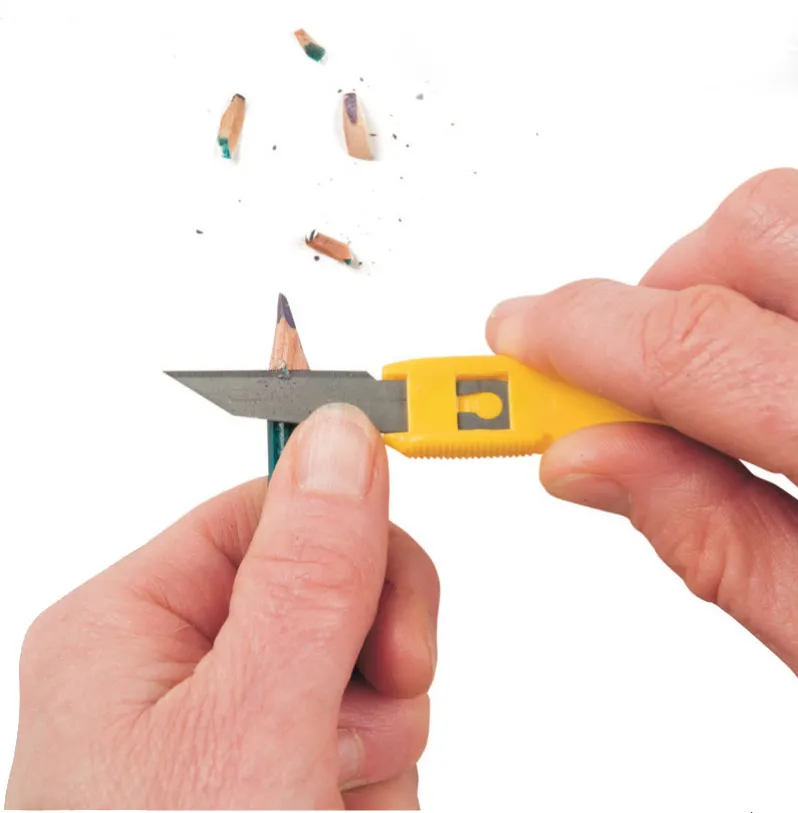
Pencils need to be sharpened regularly, so include a craft knife and a pencil sharpener in your tool kit. Generally the knife is the most useful as it stays sharp for far longer. The blade is made in sections, and when it becomes blunt, you simply remove the top section with a pair of pliers. Reserve the pencil sharpener for reclaiming points rather than for shaving off the wood.
Paper types
The paper you choose will influence your drawing style, so it is important to go for something sympathetic to the marks you intend to make, or allow the paper itself to dictate a particular quality in your drawing.
Drawing (cartridge) paper is a good all rounder. It is relatively smooth, but has a slight tooth that gives a grainy quality to lighter strokes. With increased pressure, the grain will fill in, and either become less obtrusive or totally lose its effect. For fine or detailed work, a smooth surface is essential, but not too smooth. It is impossible to build up any density without some tooth to hold the pigment; pencils will skid on a shiny, slippery surface. As a rule, the more heavily textured the paper grain, the longer it stays open and allows the build-up of pigment.

Pastel paper
The pronounced grain of pastel paper is evident in Moonlit Table. The regular patterned appearance is reflected in the flat, blocked-in shapes; a more detailed, fluid image would be less suitable for this paper.
The pronounced grain of pastel paper is evident in Moonlit Table. The regular patterned appearance is reflected in the flat, blocked-in shapes; a more detailed, fluid image would be less suitable for this paper.

Drawing papers
From left to right: Absorbent heavyweights in green, cream, and two tones of buff (1–4); lightweight, mold-made Ingres paper (5–6); medium-weight, hot pressed papers in cream, green, and gray (7-9); heavy, hot-pressed paper (10); rough white paper (11); rough paper with a pronounced tooth (12); handmade heavyweight paper (13); small-sized sketchbook (14).
From left to right: Absorbent heavyweights in green, cream, and two tones of buff (1–4); lightweight, mold-made Ingres paper (5–6); medium-weight, hot pressed papers in cream, green, and gray (7-9); heavy, hot-pressed paper (10); rough white paper (11); rough paper with a pronounced tooth (12); handmade heavyweight paper (13); small-sized sketchbook (14).
Drawing paper
This has a relatively smooth surface, but the texture can vary. The example shown here has a relatively defined grain; texture is evident even when heavy pressure is used. On a lighter-grained paper, texture will be less evident as the grain fills with pigment.
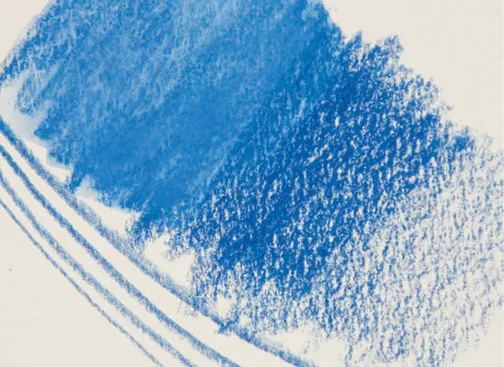
Watercolor paper
Standard watercolor paper, known as cold-pressed, can be too heavily textured for colored pencils—shading over the surface will leave the “dips and troughs” free of pigment. The more suitable types have texture but little obvious grain, and will allow a considerable build-up of pigment when shaded.
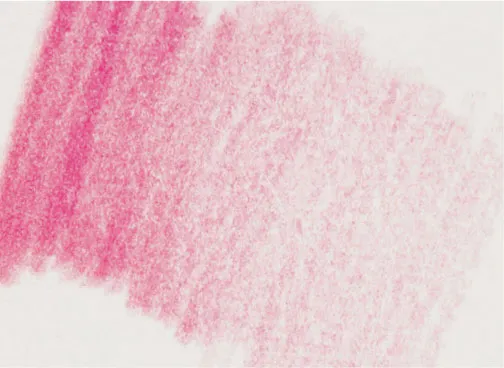
Colored pastel paper
A relatively pronounced texture is needed to grip the loose, powdery pigment. This paper would not be suitable for detailed colored-pencil work, but works well for some styles, for example, those used in Moonlit Table here.
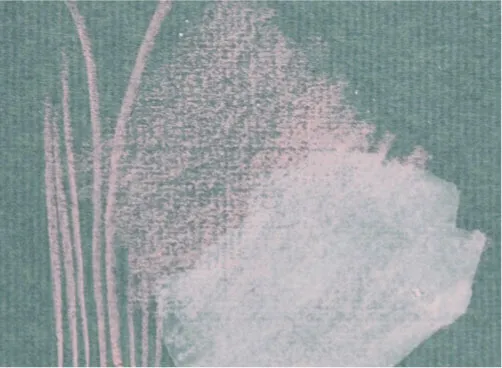
Shiny paper
If the paper is too smooth, the pigment simply sits on the surface. If you try to deepen a pale color, you will see an immediate waxy build-up wherever heavy pressure has been used, reminiscent of children’s wax crayo...
Table of contents
- Cover
- Title Page
- Contents
- Introduction
- Chapter 1: Tools and Materials
- Chapter 2: Techniques
- Chapter 3: Color
- Chapter 4: Planning and Procedures
- Chapter 5: Themed Palettes
- Chapter 6: Gallery
- Chapter 7: Subjects
- Index
- Credits
- Copyright